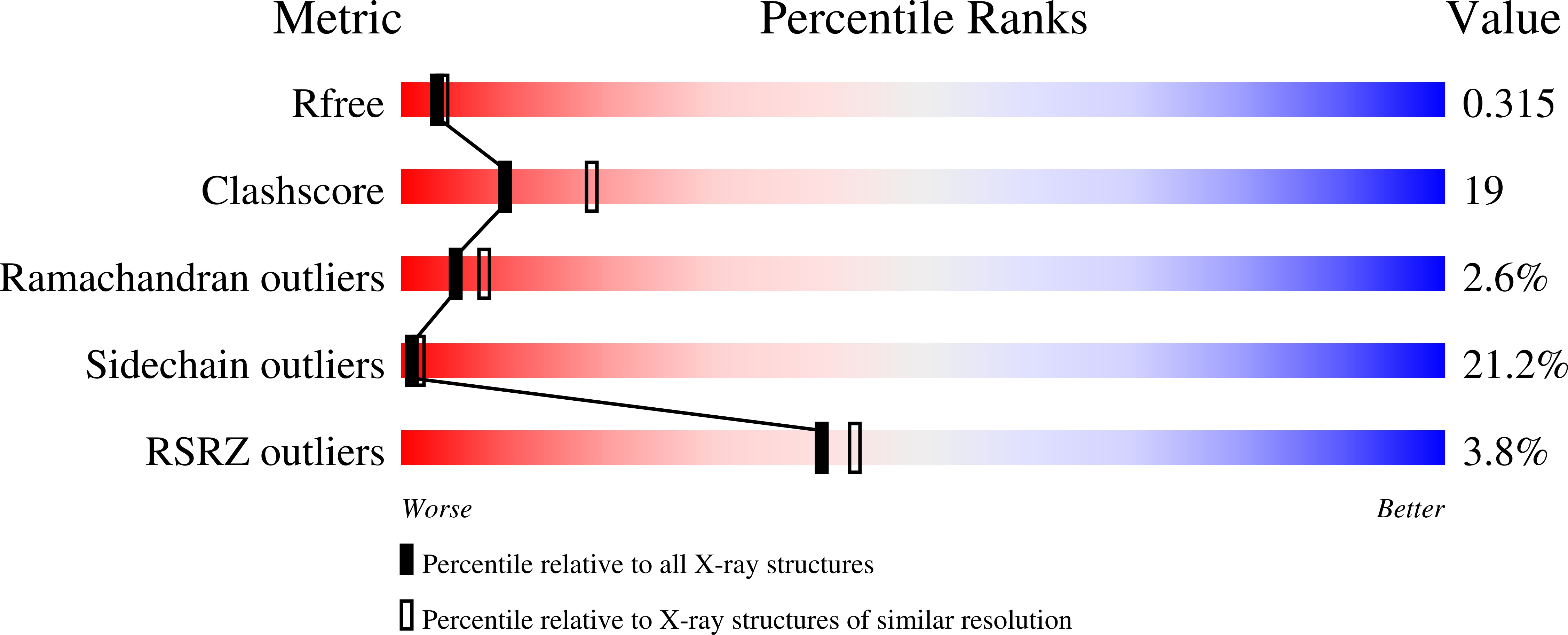Structure of the receptor-binding domain of human thrombopoietin determined by complexation with a neutralizing antibody fragment
Feese, M.D., Tamada, T., Kato, Y., Maeda, Y., Hirose, M., Matsukura, Y., Shigematsu, H., Muto, T., Matsumoto, A., Watarai, H., Ogami, K., Tahara, T., Kato, T., Miyazaki, H., Kuroki, R.(2004) Proc Natl Acad Sci U S A 101: 1816-1821
- PubMed: 14769915
- DOI: https://doi.org/10.1073/pnas.0308530100
- Primary Citation of Related Structures:
1V7M, 1V7N - PubMed Abstract:
The cytokine thrombopoietin (TPO), the ligand for the hematopoietic receptor c-Mpl, acts as a primary regulator of megakaryocytopoiesis and platelet production. We have determined the crystal structure of the receptor-binding domain of human TPO (hTPO(163)) to a 2.5-A resolution by complexation with a neutralizing Fab fragment. The backbone structure of hTPO(163) has an antiparallel four-helix bundle fold. The neutralizing Fab mainly recognizes the C-D crossover loop containing the species invariant residue Q111. Titration calorimetric experiments show that hTPO(163) interacts with soluble c-Mpl containing the extracellular cytokine receptor homology domains with 1:2 stoichiometry with the binding constants of 3.3 x 10(9) M(-1) and 1.1 x 10(6) M(-1). The presence of the neutralizing Fab did not inhibit binding of hTPO(163) to soluble c-Mpl fragments, but the lower-affinity binding disappeared. Together with prior genetic data, these define the structure-function relationships in TPO and the activation scheme of c-Mpl.
- Central Laboratories for Key Technology, Kirin Brewery Co. Ltd., 1-13-5 Fukuura, Kanazawa-ku, Yokohama 236-0004, Japan.
Organizational Affiliation:


















